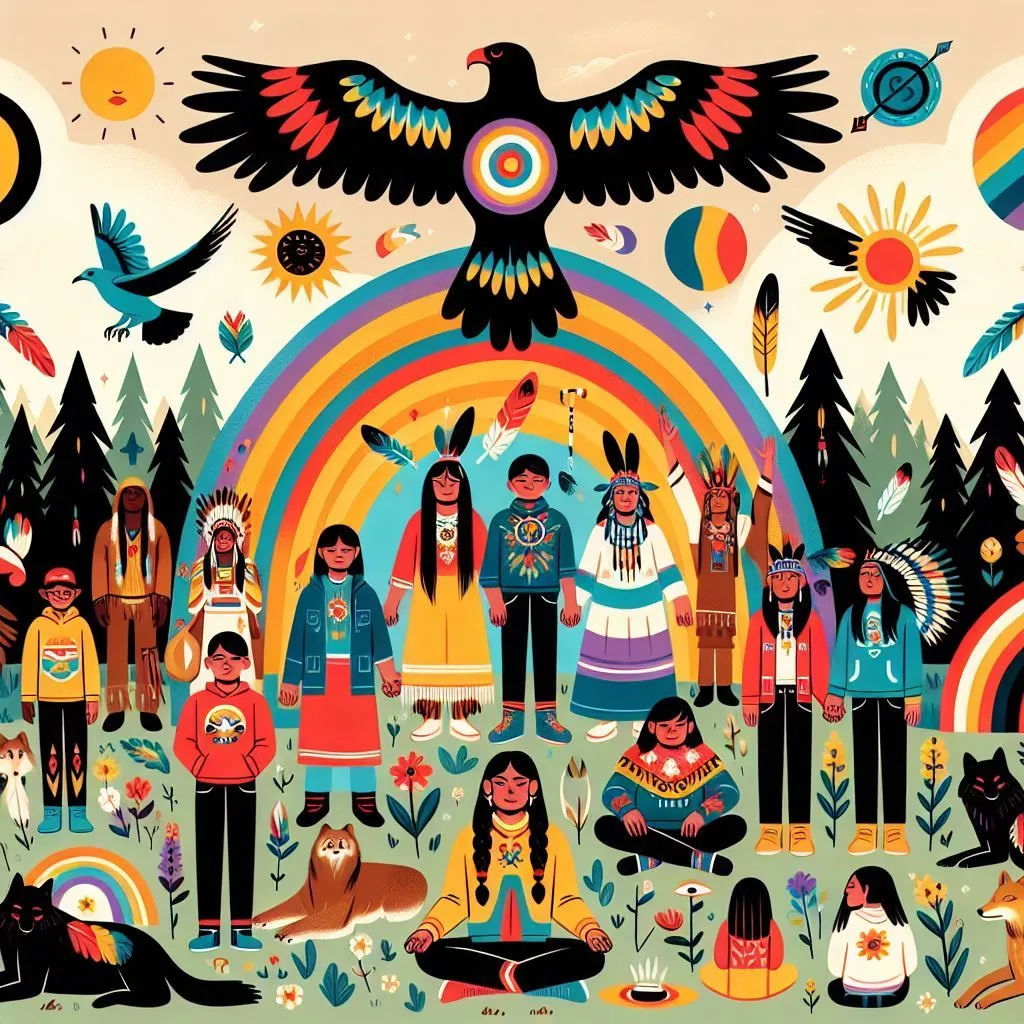3 Minutes - Article
What Cultural and Gender Identity Can Look Like Together
For many Indigenous 2SLGBTQIA+ youth and young adults, Pride Month isn’t just about parades or rainbow flags—it’s about reconnecting with culture and embracing identity. Smudging, singing, drumming, dancing—these aren’t separate from being Two-Spirit or LGBTQIA+… they’re part of it.
A lot of Indigenous youth grow up feeling like they must pick one part of who they are:
- “I’m too queer for ceremony.”
- “I’m too traditional to come out.”
But here’s the truth:
Your culture has always had space for you.
“When I smudge before Pride events, I feel whole. I’m walking with all my ancestors—and they’re proud.”
—Jane Doe (they/them), 19, Anishinaabe
Tradition + Identity = Power
Here’s how Indigenous youth are blending cultural practices with Pride:
- Smudging at Pride marches — grounding in culture before celebrating
- Drumming circles led by Two-Spirit youth
- Regalia in Pride colours
- Beadwork that celebrates gender identity or pronouns
- Land-based Pride events like camping, medicine walks, and ceremonies
Why It Matters
- Colonization tried to break the connection between gender diversity and culture. Pride is a chance to rebuild that bridge.
- Two-Spirit isn’t new—it’s ancient. Reclaiming it is resistance, healing, and pride all in one.
- You don’t have to split yourself in two to be accepted. Your full identity belongs in both worlds.
“My drumming is part of my activism. It says, ‘I’m still here—Two-Spirit and proud.’”
—Jane Doe (she/they), 22, Cree/Dene
Pride is about being seen. But for Indigenous 2SLGBTQIA+ youth and young adults, it’s also about remembering—that your culture has always known who you are. You don’t need to leave your teachings behind to celebrate Pride. You are the teaching.
